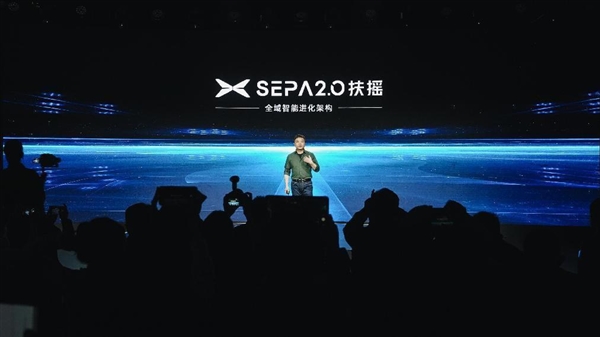XPeng, a leading smart electric vehicle (EV) manufacturer in China, has unveiled its SEPA 2.0 architecture, which is expected to accelerate the inclusion of its smart technologies. These include the XNGP Advanced Driver Assistance System (ADAS), Xmart OS in-car operating system, and X-EEA electrical and electronic architecture.
With the SEPA 2.0 architecture, XPeng aims to increase the overall R&D efficiency of its in-house developed full-scenario ADAS solution, XNGP, by 30 percent. In addition, the cost of ADAS software model adaptation is expected to be reduced by 70 percent.
XNGP is the ultimate form of driver assistance, and all of XPeng’s future models in the Chinese market will be equipped with it as standard. Backed by its autonomous driving supercomputing center, XNGP will continue to evolve and upgrade its assisted driving skills, with the goal of taking over less than once per 1,000 kilometers for highway scenarios by 2023 and less than once per 100 kilometers for urban scenarios by 2025.
XPeng’s Xmart OS leverages a multi-sensor software and hardware platform to enhance and transform control and driver-vehicle interaction. Based on the SEPA 2.0 R&D platform, software adaptation cost is expected to be reduced by 85 percent, voice software development cycle will be reduced by 50 percent, and voice assistant service cost will be reduced by 50 percent.
XPeng’s X-EEA electrical and electronic architecture allows for a 50 percent optimization of overall vehicle development costs, a 30 percent reduction in software iteration cycles, and a 300 percent increase in over-the-air (OTA) update speed. The company’s architecture-based solutions improve charging efficiency, which includes an 800-volt high-voltage silicon carbide (SiC) platform that allows batteries to be charged 50 percent faster than the previous generation.
The SEPA 2.0 architecture also includes CIB (Cell Integrated Body) technology, which allows the battery pack to be integrated into the body, not only increasing vertical space but also improving battery safety. The CIB battery pack features an 80-ton side-impact-resistant design and an IP68 water and dust-resistant design that meets the highest safety standards in three major markets: China, North America, and Europe.
XPeng’s chassis platform will be compatible with a wide range of suspension systems, providing superior mechanical quality and excellent handling performance. The company aims to have an intelligent manufacturing system in place by 2025, including the Zhaoqing plant, the Guangzhou base, and several future projects, with all manufacturing facilities integrated with SEPA 2.0 through technology upgrades.
The G6 is the first vehicle to be based on the SEPA 2.0 platform and is expected to be based on the 800 V platform, which will make it more cost-efficient.
While XPeng has not provided additional details about the G6, the company had previously stated that the new energy SUV with a price range of RMB 200,000-300,000 would be launched and delivered by the end of the second quarter. XPeng’s monthly sales target for the G6 is two to three times that of the P7.
According to a research note from Deutsche Bank analyst Edison Yu’s team, the upcoming G6 will be the model’s swing factor, determining its success in the market and making XPeng relevant again. The G6 is expected to be priced similarly to the Tesla Model Y, with a sleek design and updated interior that will attract consumers.
XPeng management believes that with increased G6 production, total monthly deliveries could reach 15,000 units at some point in the third quarter. Edison Yu’s team at Deutsche Bank predicts that this level of production is achievable and expects XPeng to reach this level by September.
The G6 is expected to have a significantly improved range that will exceed expectations and will offer much more interior space than its competitors. The company is set to hold a launch event on April 18 from 9:40-10:00 am, where more details about the G6 will be revealed.
